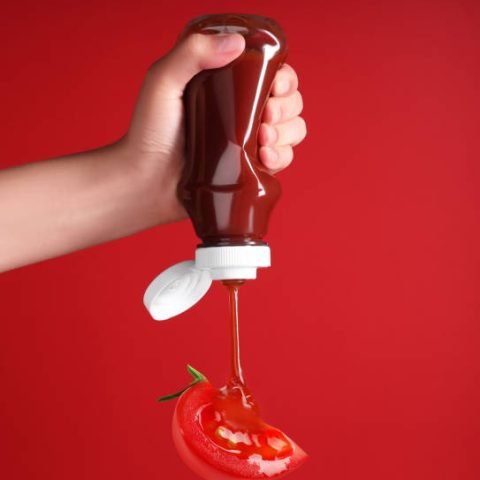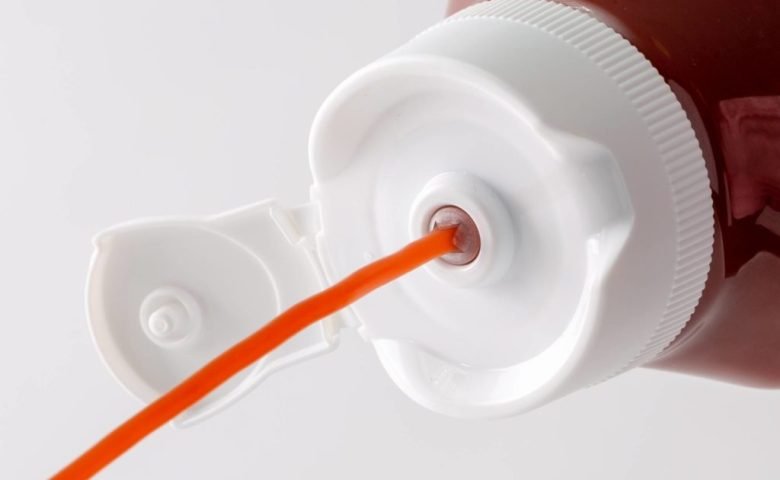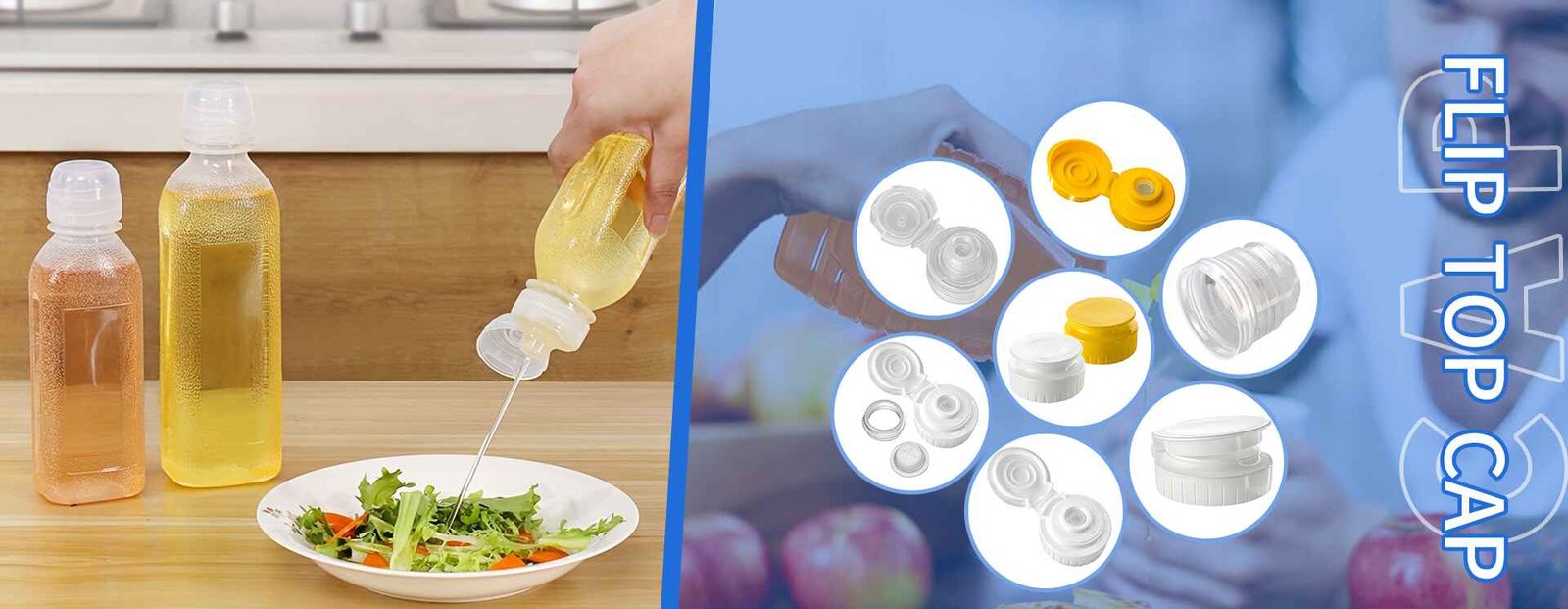

Cómo evitar que el tapón de ketchup gotee
Fugas cierre ketchup vuelven locos tanto a los clientes como a los fabricantes. Imagínese coger una botella de ketchup y encontrarse con que la salsa gotea por el cuello: sucio, pegajoso, molesto. Tanto si es usted fabricante de botellas de plásticopropietario de una marca, o simplemente alguien que intenta evitar almuerzos arruinados, evitar estas fugas es algo más que un deseo. Es un reto de diseño, material y montaje.
Esta guía aborda las causas fundamentales de las fugas en los envases de ketchup y ofrece respuestas prácticas. También aclararemos la sutil pero crítica diferencia entre tapones abatibles para botellas y cierres.
¿Por qué gotea el tapón de ketchup?
En primer lugar, identifiquemos a los culpables de las fugas. cierres ketchup:
Zona de sellado deformada
Gorro flojo o mal colocado
Bisagra débil en la tapa abatible
Válvula de material inferior o válvula unidireccional de silicona ausente
Desajuste del cuello de la botella o desalineación de la rosca
Puntos de contacto contaminados o pegajosos por acumulación de salsa
Las fugas suelen empezar siendo mínimas -una gota-, pero se convierten rápidamente en un problema para la reputación de la marca. Un fallo tapa abatible no sólo derrama ketchup. Derrama la confianza de los clientes.
¿Cuál es la diferencia entre tapas y cierres?
Comprender los tapones para botellas
A tapa suele referirse a un componente roscado que se enrosca o encaja en el cuello de una botella. Se cierra manualmente. Piense en tapones de rosca o de cúpula.
Tapones roscados: Enroscado para un cierre hermético
Tapas a presión: Empujado en su sitio
Tapones: Giro con orejetas acodadas
Tapas de cúpula: Topes redondeados y elegantes
¿Materiales? Normalmente polipropileno (PP) o polietileno (PE).
¿Qué son los cierres?
Cierres incluyen los tapones, pero también van mucho más allá. Son cualquier dispositivo que selle, dispense o proteja el contenido.
Lo encontrarás:
Cierres abatibles
Tapones dosificadores
Cierre de bombas
Cierres de seguridad para niños (CRC)
Cierres a prueba de manipulaciones (TEC)
Pueden ser de caucho, metal o materiales estratificados. Especialmente para las botellas de ketchup, los cierres suelen mezclar un tapa flip top 24 410 con un válvula unidireccional de silicona para una dispensación controlada.
Los cierres cumplen múltiples funciones: protegen, vuelven a cerrar, resisten a los niños y evitan la contaminación. Más que un tapón, son dispositivos de envasado inteligentes.
Referencias:
1. Reduzca el desorden del Ketchup: Gane con la tecnología de válvulas inteligentes para botellas de ketchup para una dispensación superior del producto.
2. Diga adiós a los derrames: Cómo una válvula de hendidura transversal de silicona mejora la precisión y el control
3. ¿Por qué los tapones abatibles para botellas están revolucionando el envasado?
4. Cómo entregamos a tiempo 5 millones de tapones de botellas de deporte personalizados para un cliente
Tapas abatibles para botellas: Estupendas, pero ¿son a prueba de fugas?
Los flip tops están por todas partes, desde tapas para botellas de plástico a los tubos de condimentos. Son rápidos, cómodos y baratos. Sin embargo, no todos son a prueba de fugas.
Barato tapas abatibles para biberones a menudo sufren:
Bisagras sueltas
Mecanismos de cierre débiles
Tensión de chasquido deficiente
Sin válvula para bloquear el flujo inverso
¿La solución? Utilizar funciones de dispensación mejoradas.
Soluciones inteligentes para detener las fugas en el cierre del ketchup
He aquí cómo construir un sistema de envasado de ketchup a prueba de fugas, paso a paso:
1. Elija el cierre adecuado: Combo Flip Top + Válvula de Silicona
Cásate con un tapón dosificador con un válvula unidireccional de silicona. Esta válvula se encuentra en el interior del cierre, impidiendo que el ketchup se derrame hacia atrás. La presión ejercida al apretar abre la ranura. Si no se aprieta, no hay flujo.
Ideal también para botellas boca abajo. Como las que se encuentran a gran escala envases plásticos al por mayor.
2. Haga coincidir perfectamente el tapón con la botella
El desajuste de hilos es un asesino invisible. Su tapones para botellas debe encajar firmemente en las roscas del cuello. Incluso un hueco de medio milímetro provoca fugas.
Trabajar en estrecha colaboración con fabricantes de botellas pet para validar el ajuste mediante pruebas reales.
3. Dar prioridad a los materiales fabricados a presión
Las botellas de ketchup se doblan. Esa flexión provoca una acumulación de presión interna, especialmente durante el transporte o cuando se caen.
Utilice cierres a base de PP con alta resistencia al impacto. O mézclelos con elastómeros si está fabricando productos a medida. botella con clip sistemas.
Evite el plástico de baja calidad. Las paredes finas se doblan con facilidad.
4. Incluya ventilación, pero del tipo adecuado
La ventilación controlada evita el bloqueo por vacío sin invitar a las fugas. A válvula de silicona consigue este equilibrio a la perfección. Respira a la vez que sella.
No confíe en los orificios de ventilación perforados ni en molduras deficientes.
5. Mantener limpia la fabricación
Incluso una mota de ketchup seco pegada cerca del cierre arruina la función de cierre.
Su tapas de botellas de plástico deben montarse en salas libres de polvo. Los residuos acortan la vida útil del producto y arruinan la experiencia del usuario.
6. Prueba por lotes cada 1000 unidades
Las fugas sorpresa suelen deberse a un defecto de moho inadvertido. Compruebe su tapas flip top por lotes, no por fe ciega.
Utilice pruebas de compresión, pruebas de caída y evaluaciones de la presión de fuga.
Tamaños de tapones abatibles: ¿Qué funciona para el ketchup?
Los tamaños estándar incluyen:
Tapa abatible 24 410
28/400
38/400
Para salsas más espesas como el ketchup, el 38/400 flip top proporciona un mejor control del exprimido y del volumen. Combínelo con una válvula unidireccional para dispensar sin ensuciar.
Consejos para fabricantes y compradores de botellas de plástico
Si fabrica botellas o cierres, preste atención:
Trabajar con proveedores que dominen venta tapas de plastico y venta de tapas plasticas
Solicitar asistencia para la integración de válvulas
Verifique con antelación la compatibilidad del tapón de la botella
Evitar resinas mezcladas o dimensiones incoherentes
No trate el ketchup como si fuera agua: es más espeso, lento y pegajoso.
Para las marcas alimentarias que importan tapones abatibles para botellasExija moldes de cierre con certificación ISO. Busque también la integración de la válvula de hendidura en el molde.
Una marca que solucionó la fuga
Una marca mundial de salsas trabajó con un fabricante de botellas de plástico para desarrollar un cierre ketchup con:
Doble bisagra tapa abatible
Moldeado en válvula unidireccional de silicona
Sobretapa de PE mezclado con alto rendimiento de barrera
La tasa de fugas se redujo en 94% en 60 días. Las quejas de los clientes casi desaparecieron.
Consejos finales: No dejes que un tapón destruya la salsa
Un buen bote de ketchup no es sólo por la salsa, sino también por el contenido. cierre.
Elige una tapa abatible que cierra bien
Utilice un tapón dosificador con válvula unidireccional
Confirme el ajuste con el Cuello de botella PET
Mantenga las juntas limpias y los huecos sellados
Pruebe con frecuencia y actualice sus moldes si es necesario
Los malos cierres cuestan a las marcas algo más que dinero. Cuestan reputación.
Detenga las fugas con cierres de ketchup más inteligentes
Elegir bien cierre ketchup acaba con el desorden y empieza la satisfacción del cliente. Combine la robustez tapones abatibles para botellas con materiales de alta calidad, válvulas integradas y un montaje limpio.
El diseño a prueba de fugas no es cuestión de suerte. Es ingeniería, pruebas y atención al detalle. Tanto si vende tapas para botellas de plásticogestionar tapas de botellas de plásticoo simplemente quieres menos almuerzos empapados, todo empieza con mejores cierres.





